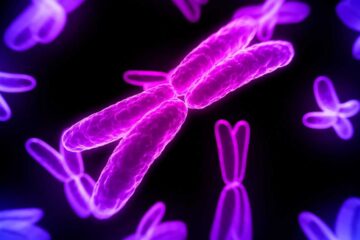In the bustling metropolis of the cell, where the machinery of life hums with ceaseless activity, ribosomes are the true architects of an intricate protein symphony. These unassuming cellular structures might not be as glamorous as DNA or as powerful as enzymes, but they hold the keys to the creation of all the proteins that drive the machinery of life.
In this article, we will embark on a journey to explore the remarkable world of ribosomes, shedding light on their unique features and the pivotal role they play in the cellular orchestra.
Ribosomes: Nature’s Protein Factories
Ribosomes are tiny, yet mighty, organelles found within every living cell, from the simplest prokaryotes to complex multicellular organisms like humans. These cellular workhorses are responsible for a process called protein synthesis, the intricate dance of turning genetic information into functional proteins.
A ribosome is composed of two subunits, one large and one small, each made up of ribosomal RNA (rRNA) and protein molecules. These subunits work together like a well-coordinated team to read the genetic code stored in DNA and produce proteins accordingly. The ribosome reads messenger RNA (mRNA) molecules and, with the help of transfer RNA (tRNA), assembles amino acids into long chains, forming proteins.
The Unique Features of Ribosomes
Universality: Ribosomes are found in all forms of life, from bacteria to humans, and they share a common structure and function. This universal presence underscores their fundamental role in biology.
Speed and Precision: Ribosomes can synthesize proteins at an astonishing rate, often producing several amino acids per second. Despite this speed, they maintain remarkable accuracy, ensuring that proteins are constructed with precision.
Quality Control: Ribosomes don’t just blindly assemble proteins; they have built-in quality control mechanisms. If an incorrect amino acid is added to the growing protein chain, the ribosome can detect the error and initiate a process called proofreading to correct it.
Dynamic Structure: Ribosomes are not static structures. They can change shape and adapt to the specific needs of the cell. This flexibility allows ribosomes to produce a wide range of proteins required for various cellular functions.
The Role of Ribosomes in Human Health
Understanding ribosomes and their functions is crucial for biomedical research. Mutations or dysregulation of ribosomal components can lead to a range of diseases, including some forms of cancer and rare genetic disorders like Diamond-Blackfan anemia. Targeting ribosomes has also become a strategy in the development of new antibiotics, as they are distinct from human cells and essential for the survival of bacteria.
Conclusion
Ribosomes, the unassuming architects of the cellular protein symphony, deserve recognition for their remarkable role in sustaining life. These tiny structures, found universally across the biological spectrum, have the power to translate the genetic code into functional proteins with astonishing speed and precision. Their unique features, such as quality control mechanisms and dynamic adaptability, make them indispensable players in the intricate dance of life.
As we continue to unveil the secrets of ribosomes and their involvement in human health and disease, we gain a deeper appreciation for the complexity of cellular biology. Ribosomes may be small, but their impact on our understanding of life’s fundamental processes is immeasurable, and they continue to inspire scientific exploration and discovery.



